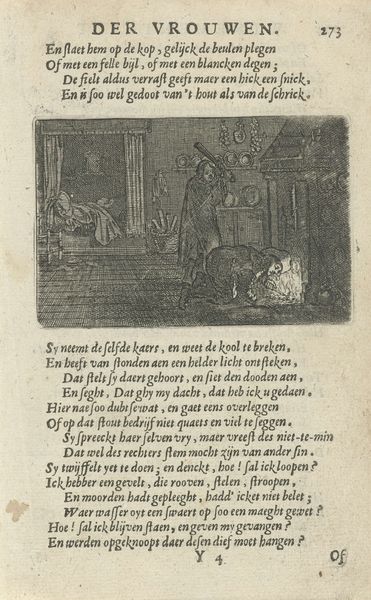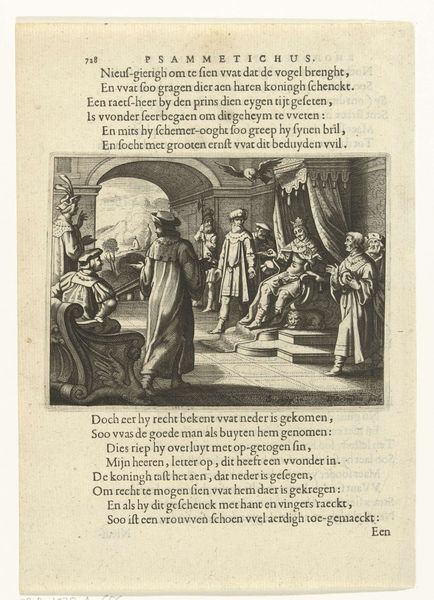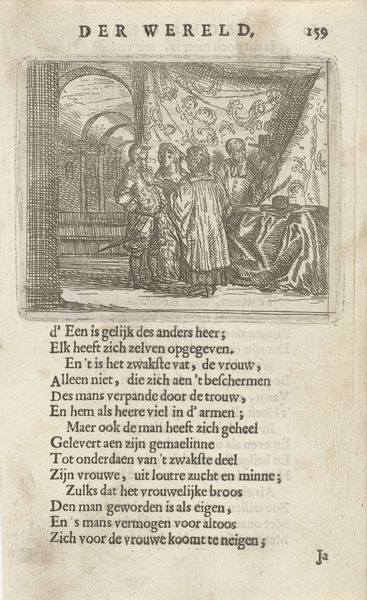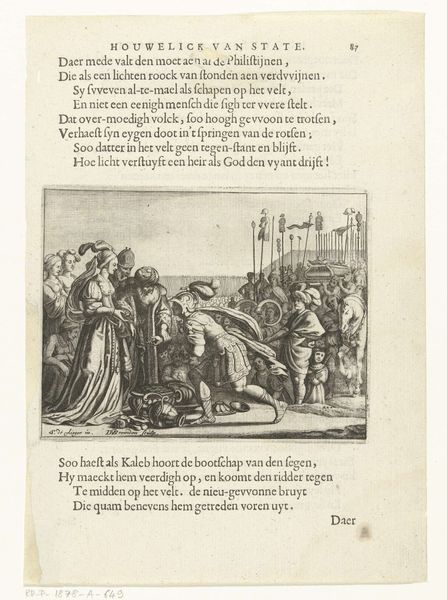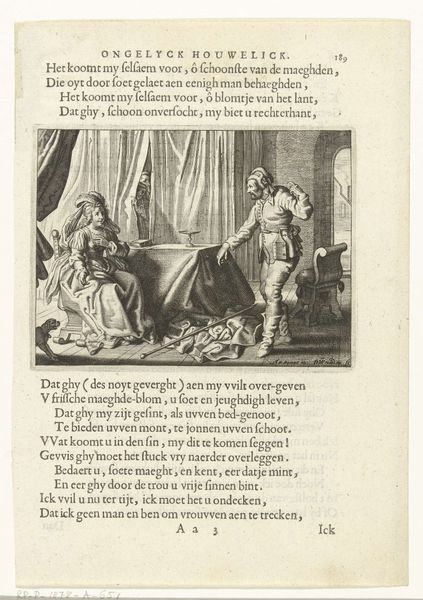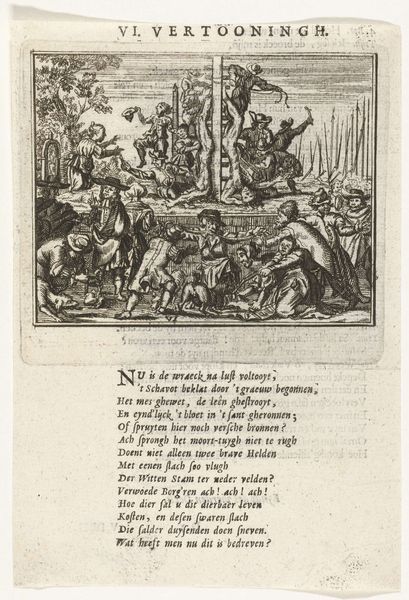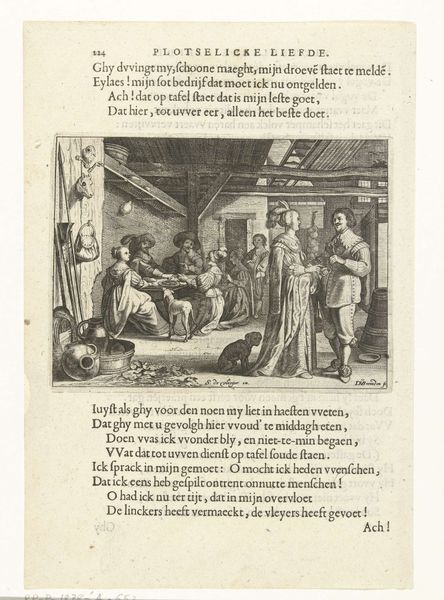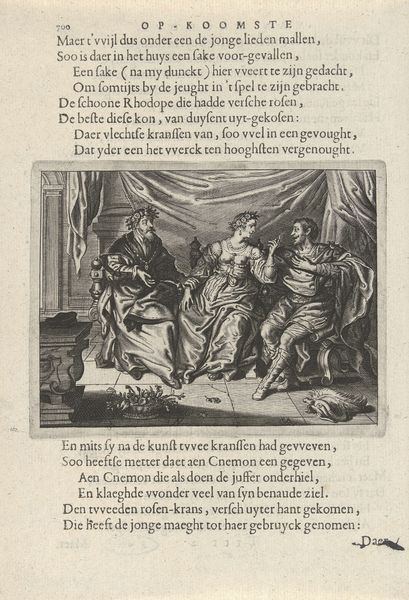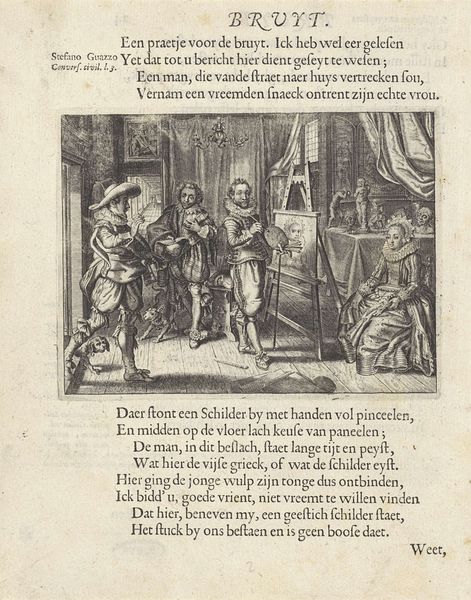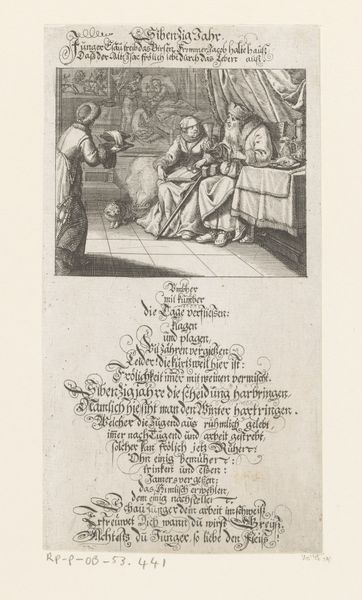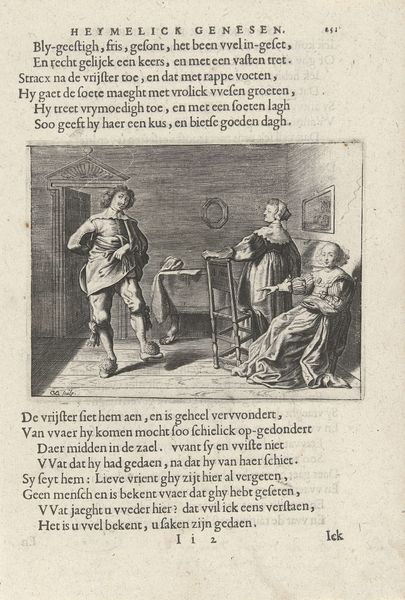
print, etching, engraving
#
narrative-art
#
baroque
#
dutch-golden-age
# print
#
etching
#
old engraving style
#
figuration
#
line
#
genre-painting
#
engraving
Dimensions: height 230 mm, width 162 mm, height 102 mm, width 135 mm
Copyright: Rijks Museum: Open Domain
Curator: Here we have "Misandere Visiting Euglottus at Night," an etching and engraving by Daniël van den Bremden, created around 1635. It's part of the Rijksmuseum's collection. What's your first take on this one? Editor: The shadows really strike me. It's like peering into a murky dream, or a stage play where something slightly scandalous is about to happen in the shadows. There's a hidden quality, almost conspiratorial. Curator: Right, Van den Bremden certainly creates that mood with his use of light and shadow. The narrative unfolding seems to be quite explicit, judging from the Dutch text above the image. There’s an obvious tension between the figures, heightened by their attire and the cramped, almost claustrophobic space. Editor: And I'm drawn to the visible process. You can see the cross-hatching, the lines clearly define the forms. I imagine the physicality of etching that plate, the labour of it. There is very little obscured in the methods employed and a directness about its creation that stands out from some more illusionistic artworks. Curator: Absolutely. The medium itself plays a role. Prints like this would have been more accessible, allowing these genre scenes to circulate widely. Did this accessibility potentially challenge the more idealized notions of courtship popular at the time? I think it also invites viewers into this intimate space—to observe, even eavesdrop. Editor: Precisely. It democratizes art, right? The act of producing and distributing these prints relies on an economic model far from that of unique art objects and paintings produced under the patronage system. What story do you think the image is telling and how are social and labour relations displayed in it? Curator: Good question. I'm compelled by the complexity in their body language and how it speaks to different facets of desire and perhaps also to the expectations of men and women at the time. I believe that even today these kinds of expectations would have some people bristling... Editor: Agreed. By focusing on process and access, we also shift how we place value upon the piece; maybe, even more significantly, our analysis highlights both what the piece sought to achieve during its creation as well as what it may suggest now. Thank you for sharing this one with me. Curator: The pleasure was all mine. Thank you for offering these critical perspectives; this piece clearly bears prolonged meditation, wouldn't you agree?
Comments
No comments
Be the first to comment and join the conversation on the ultimate creative platform.
